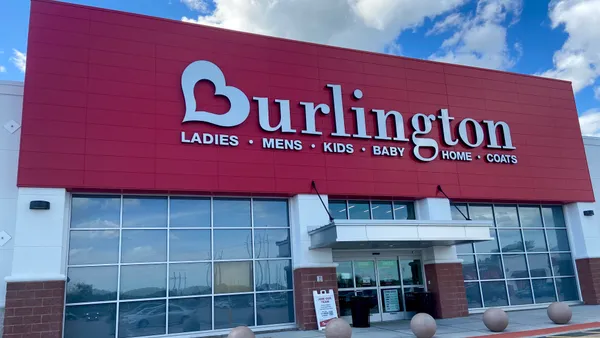Dive Brief:
- Walmart will work with Symbotic over a period of years to outfit 25 distribution centers with an automated end-to-end process for store-level replenishment, the companies announced last week.
- Symbotic's system automates the processing of inbound shipments, storage, retrieval and outbounding of orders. It uses robotics and machine vision to break down pallets, store them at a case level and then build orders for Walmart stores as needed.
- Through its work with Symbotic, Walmart aims to improve the storage density, pallet density, throughput as measured in cases per hour, system availability and order accuracy of its replenishment system.
Dive Insight:
Walmart and Symbotic have worked together since 2015, with their first system coming online in 2017 in Brooksville, Florida. Symbotic believes if it can solve the problem of automated replenishment in Walmart's complex supply chain, then its technology will be applicable to other retailers as well.
Symbotic has also worked with other large retailers, including Target, on efforts to automate replenishment.
The Symbotic system starts with inbound cells that can be slightly different depending on what type of inventory — either palletized or in a container — is showing up at a given warehouse. It uses machine vision to do a visual audit of the inventory to ensure everything showed up and is in the right orientation. Robotic arms are used to move cases off of pallets.
Symbotic's warehouse management system determines where the inventory will be placed within a storage system. Autonomous mobile robots then move the cases to the right location. This process is then reversed when a particular case is needed to be shipped out to a Walmart store.
The outbound cell within a Symbotic system brings all cases in an order to the right location and begins building a pallet for the order. Robotic arms work on two sides of a pallet to build an order.
Walmart was able to keep its existing ordering and replenishment system for its distribution centers as Symbotic connected its system to what Walmart already had in place.
In talking about the technology investment at the distribution center level, Walmart CFO Brett Biggs said that it will also streamline operations at the store level.
"I believe there's going to be definitely some second-mover advantages on ... the technology we're developing [at] our distribution centers to make palleting easier, getting it to stores in a way it's more efficient for them to unload and get out to the shelves, all of that is going to be cutting-edge technology and we've been talking about that for a while," Biggs said at an analyst conference last month.
Walmart is not the only retailer to announce plans to overhaul its replenishment process for its brick-and-mortar stores in recent months. In March, Target announced plans to build two new distribution centers and increase its investment in automation and robotics at those facilities. The importance of robotics for improving e-commerce fulfillment led Amazon to invest $40 million in a new 350,000-square-foot robotics innovation hub in Westborough, Massachusetts.
Symbotic has been focused on replenishment to physical stores rather than e-commerce fulfillment because the majority of goods in the U.S. still flow through a more traditional replenishment model. But Symbotic is currently in the process of building e-commerce fulfillment capabilities into its platform with a full-scale proof of concept currently in the construction phase.
This story was first published in our weekly newsletter, Supply Chain Dive: Operations. Sign up here.















